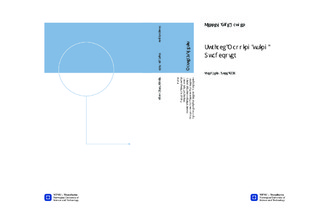| dc.description.abstract | This thesis studies the use of unmanned aerial vehicles to perform ice managementin the Arctic Ocean by gathering information about and physically control the iceenvironment. Such a system is needed for safety reasons as marine operations aremoving further north. In order to gather information about the ice environment, aUAV will be used for surface mapping. The quadcopter Parrot AR. Drone 2.0 will be used as a testbed for implementing proposed strategies for guidance, navigation and control while doing surface mapping using a camera. A guidance and navigation system is designed and implemented using measurements from onboard sensors and the camera system OptiTrack, which is used to measure position, velocity and orientation of the quadcopter. Using these estimated states as parameters and inputs to a proportional-integral-derivative controller, the position will be controlled. Waypoints are calculated according to desired parameters provided by an operator. An autonomous guidance, navigation and control system that moves the drone in a search pattern inside a desired area requested by the operator, is the result of the designed surface mapping strategy. An algorithm that performs object detection and mapping is implemented for the onboard camera to be able to detect objects in the lab setup. Back-projection of a 2D pixel point to respective world coordinates is implemented. C++ is used for all modules.Sub modules are simulated in Matlab and Simulink before tested with the AR.Drone. Simulations and measurements from lab testing are compared for performance evaluation. Results for the overall implementation shows that a UAV platform for doing object mapping is indeed a concept to pursue. However, this lab setup would not be applicable in a real world experiment. The AR. Drone will, due to its weight and limited power, not be able to operate under heavy wind and weather conditions. Also, detection of ice is more complicated than the suggested implementation, due to factors like weather and light reflections. It should be clear that this system design is rather a prototype illustration of a concept than a system to be used. | nb_NO |


